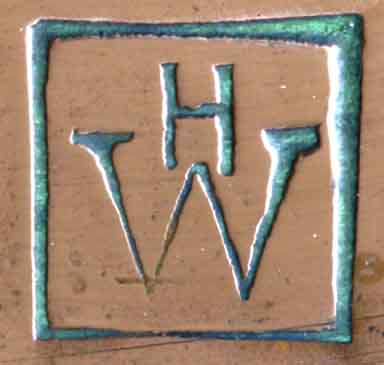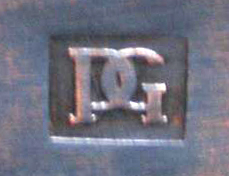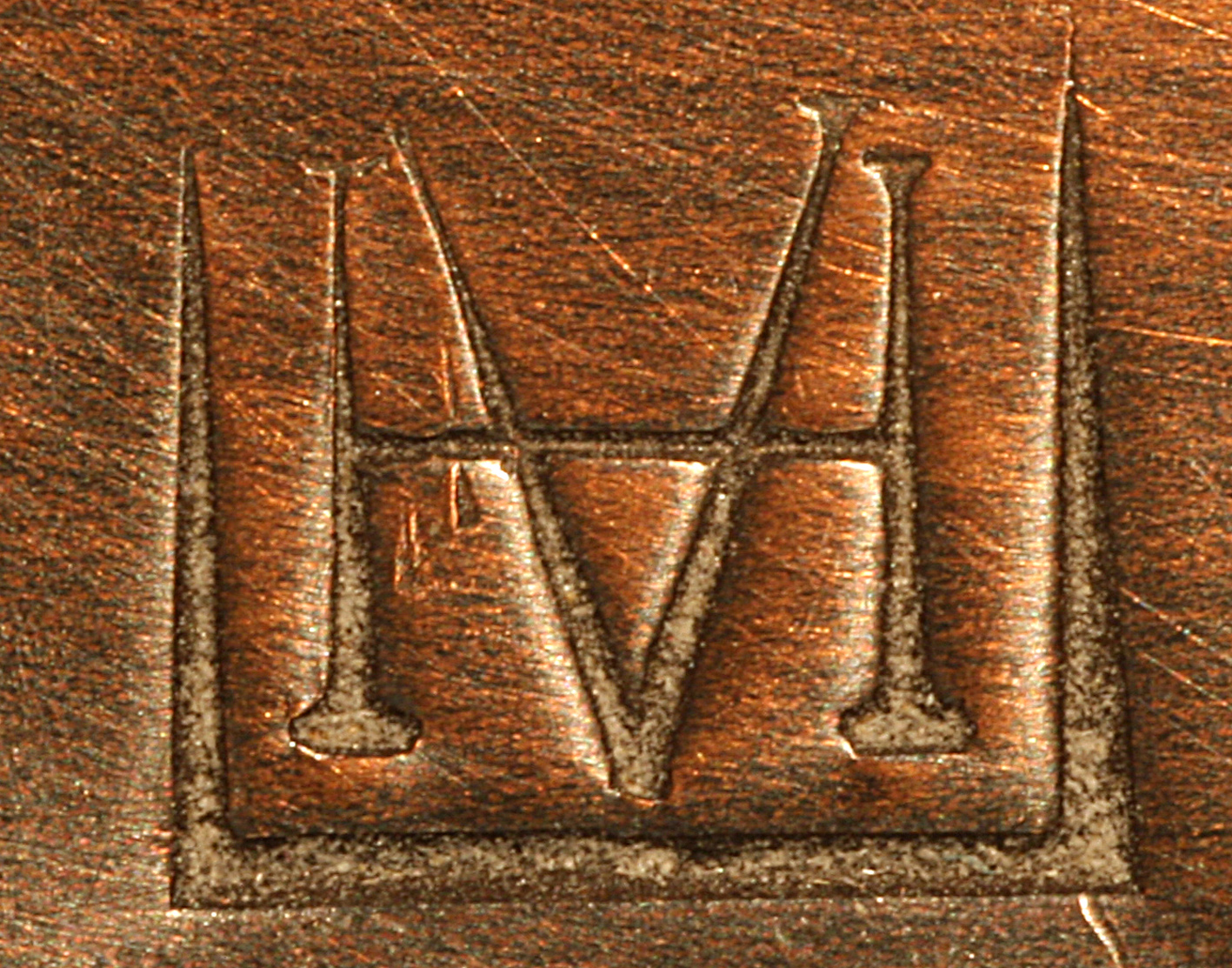Hugh Wallis (1871-1943)
(c) Antique Metalware Society
Small extracts can be used with acknowledgements to 'Oldcopper.org' website.
Helpful comments are very welcome.
Hugh Wallis (1871-1943), coppersmith working in Altrincham, Cheshire, mostly making trays  with distinctive pewter inlays and patterned rims. Usually the inlays were floral motifs. Some of his work had a patinated finish. Much of what survives has unfortunately had the inlay polished out.
with distinctive pewter inlays and patterned rims. Usually the inlays were floral motifs. Some of his work had a patinated finish. Much of what survives has unfortunately had the inlay polished out.
Hugh Wallis was educated at Ackworth School, Yorkshire, (Quaker) as were many of his family. Hugh Wallis studied art at the Herkomer Art School, Bushey, Herts., in the early 1890s and exhibited fourteen times at the RA. It is not known where he studied metal work. Best known for his metalwork (not just copper) had a studio/workshop in Altrincham from 1900. I knew his son Brian (1913-1981) who also worked copper with the inlaid pewter (a process HW invented). The trick is to tell the difference between HW's and BW's work - not always easy since Brian used his father's stamps to mark his work too! (Many thanks for this information to Hugh Gray-Wallis.)
Bushey Museum in Hertfordshire has published a 94-page illustrated biography of Hugh Wallis:"Hugh Wallis, Artist and Art Metal Worker" by Margaret Thompson, obtainable from the Museum.
Harold Holmes, hand crafted copperware, a former apprentice of Hugh Wallis and working in  his style. He died in the 1970s.
his style. He died in the 1970s.
This mark is on some relatively recently made trays of similar style oxidised copper with pewter decoration. They are usually in 'as new' condition with perfect inlays and well lacquered. These were made by Paul Gilling from c1978 - 1990 and the 'VH' stands for Victoria House.

He had learnt the techniques from Brian Wallis, the son of Hugh, and for the years prior, 1976 - 1978, he had used his initials 'PG' in a square. (Thanks for this information to Hugh Gray-Wallis.)

'As regards Hugh Wallis' original technique, shown to me by Brian, this was very labour intensive and involved painting the required design in negative in 'plumbers black' then fluxing the area to be tinned and then running solder on to the item and wiping the surface with a 'moleskin', thus tinning it. The design was then delineated by chasing the perimeter and any other detail needed. This was done whilst the piece was flat so then it had to be 'raised' on a wood block (an appropriately shaped tree stump) and the edge rolled and wired. It was then oxidised, relieved with pumice powder, and lacquered. This is the method used by Brian Wallis and initially also by myself but proved too labour intensive to be profitable. I sold mainly through craft fairs but soon realised that the original method was not now cost effective. I initially speeded things up by spinning salvers and bowls rather than raising, which restricted me to circular objects. Then (as now) I developed my own 'pewter' paste which I could screen print and lastly I stopped chasing altogether which enabled me to produce much finer detail such as coats of arms. I now only make the small copper plaques with fine detailed artwork which I apply to items bought in as shown in the Victoria House website. As I am now 68 I hope to sell the business next year.'
(Many thanks to Paul Gilling)

This is the personal touchmark of Paul Gilling.